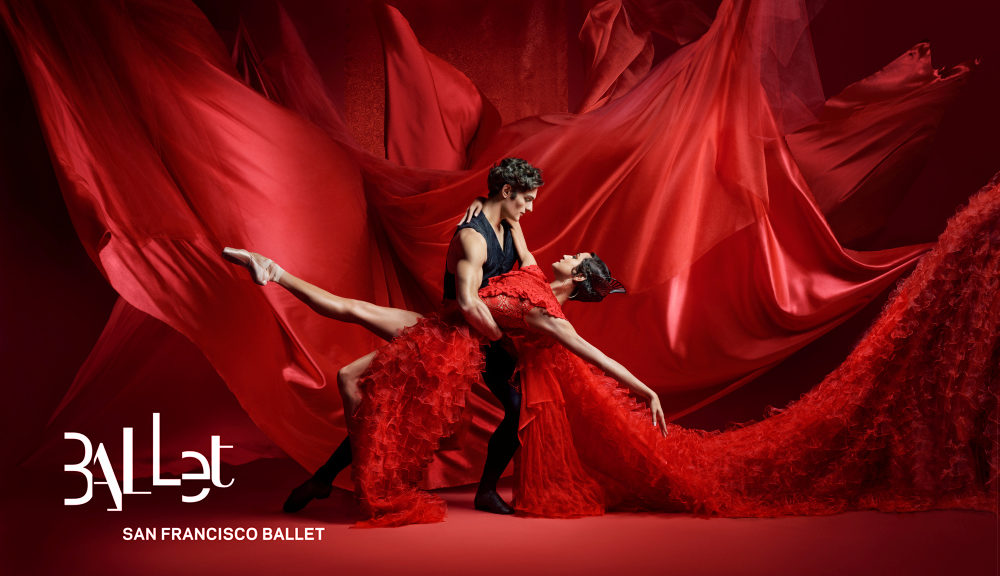
Stunning Ballet, Miscast Music
If amazing dancing throughout the night is your thing, “Don Quixote” is your ballet. But if plausible music is your driving force, better send Don Q off to joust with some windmills.
The most famous early Spanish novel inspired this classic ballet standard which was launched exactly 150 years ago, in Russia, thanks to an Austrian composer. I think you see where this is headed.
If you expect an abundance of jotas, asturias, and flamenco themes and rhythms, muy español, forget it. Composer Ludwig Minkus seemed more intent on introducing the fabled Don via reams of Viennese-operetta music.
Czar Nicholas, meet your distant neighbor, Emperor Franz Josef!
The San Francisco Ballet has staged this deathless stylistic pastiche with four choreographers credited (Gorsky-Petipa-Tomasson-Possokhov). The performance Jan. 30 was spectacular, with great agility and rafter-scraping leaps, and countless precise formations. Theirs offers a superb and generous exhibition of dancing by principals, surrounded by legions of corps de ballet in lightning-fast costume changes—now fairies in the woods, now matadors, now gypsies, now elegant donnas and muchachas, now village maidens. All compacted into less than three hours.
And that still allows a dramatic sideshow—horseplay (quite literally) by Quixote, his sidekick Sancho Panza, and various protagonists doing enough old-style pantomime to wear out lesser veterans. One of this production’s hallmarks is the dignity of Quixote throughout, not the usual nutty buffoon, but rather an aged eccentric who is out of touch, reminiscent of when the elderly George Balanchine used to play the part in NYC. Pity San Francisco never has him impaled on a windmill sail and swept up into the air, the way that the Royal Ballet (and Cervantes’ novel) have had it.
In Helgi Tomasson’s clever restaging, the many venue changes from taverna to windmill to plaza avoid the usual stop-and-go with scenelets, usually with Quixote lying in front of the curtain while the music, revelry and unseen stage-reset go on full speed.
Taking center stage are the “minor” characters dancing up a lovers’ storm, the fetching Kitri and the young barber/guitarist Basilio, spending the evening eluding both her dad and the rich old Louis-XVI fop the dad wants as her husband, Gamache. This results in their will-o’-the-wisp escapes, stage-crossing leaps, and attempts to hide behind the ubiquitous Spanish fans—-accessories that all the would-be Kitris had had to master flipping and whipping in perfect time back in ballet school. These were executed without a hitch by the nimble women, whether dressed in flowing Iberian dresses or in more modern wheel-shaped tutus.
Three lead couples are needed for major solo work, no less, including (on Jan. 30) Kimberly Marie Olivier’s flamboyant gypsy with striking deep dips and swoops, dancing to music suggesting Enesco’s Romania more than LaMancha. The lead-of-leads by Kitri and Basilio calls for the most virtuosic dancing by aerial performers having a butterplate-sized (and hopefully, not anorexic) waistline. The animated Kitri this night was played by Mathilde Froustey, who had mastered everything from the pantomime—the smirk, the frown, the first-love—to the “Kitri leap,” a jump with a foot reaching toward the back of the head. The partner was the no-less-agile Angelo Greco, one of the highest-leapers in SFB’s long history, adding jetees and scissor kicks while in space. Greco makes his turns “backward”—turning toward his left shoulder, not his right like most—which makes partner matchups more challenging. But he more than makes up with his Olympic elevation and agility.
Casts change nightly.
Martin West and pit orchestra were admirable in their ersatz pseudo-Spanish score.
As for the indestructible composer Minkus, after his stints at St. Petersburg, Russia, he went back to where he belonged, living in Vienna, Austria, till his death in 1917 at 91. For those pining for jamón serrano and jerez, Minkus had served up Wurst and Heuriger for his “Quixote,” generously so.
“DON QUIXOTE,” S.F. Ballet, Opera House, San Francisco. Two and three-quarters hours, two intermissions. For info: (415) 865-2000, or go online.